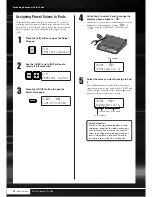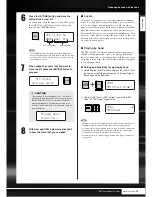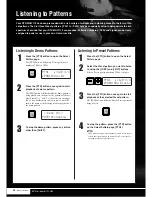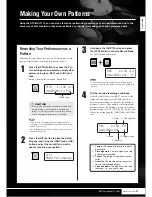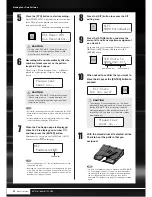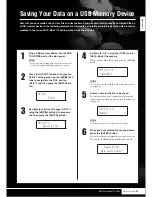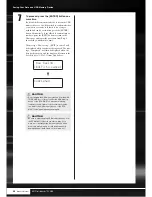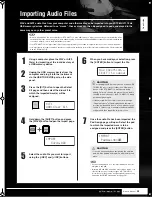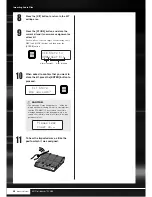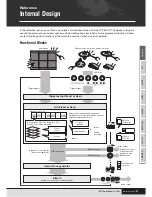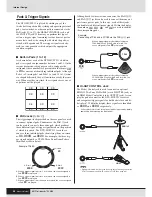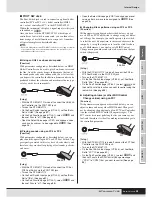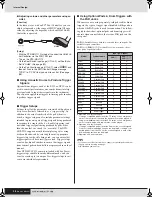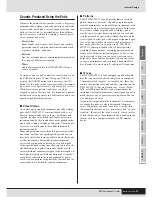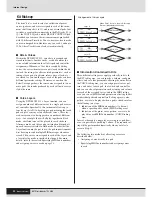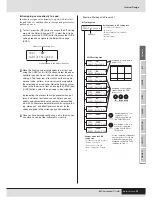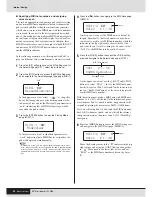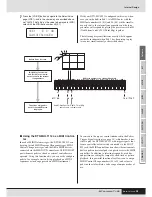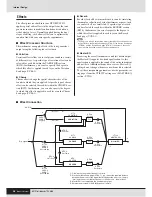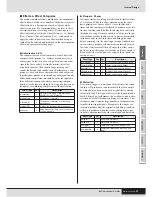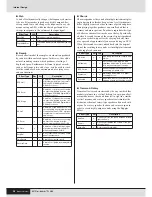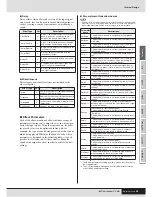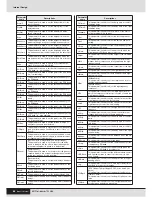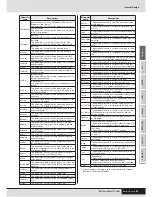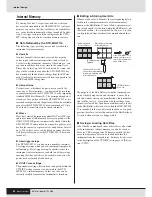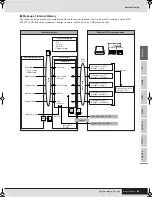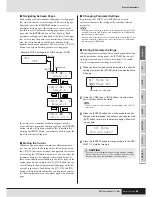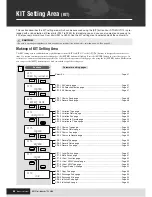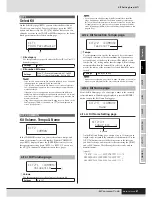
32
Owner’s Manual
Internal Design
Kit Makeup
The term “kit” is used to refer to a collection of preset
voices, patterns, and waves assigned to each of the instru-
ment’s built-in pads (1 to 12) and to any external pads, foot
switches, or controllers connected via the PAD jacks (
M
to
Q
), the FOOT SW jack, and the HI-HAT CONTROL jack.
For added convenience, the instrument comes pre-loaded
with 30 different Preset kits. You are, however, free to make
your own unique kits in whatever way you see fit, and up to
200 of these User kits can also be stored internally.
■
Kits & Voices
Within the DTX-MULTI 12, voice data is grouped and
stored in kit units. In other words, each kit contains the
voice-related information for all of its pad and controller
assignments. Whenever a User kit is created by editing
voices, the voices themselves are not stored within the kit;
instead, the settings for all associated parameters – such as
tuning, stereo pan, attack time, release time, effects, etc. –
are stored. As you would expect, each of the pads can have
different parameter settings. Therefore, even when the
Select Voice page shows the same voice assigned to two or
more pads, the sounds produced by each will not necessar-
ily be the same.
■
Voice Layers
Using the DTX-MULTI 12’s Layer function, you can
assign a number of different voices to a single pad or exter-
nal controller. Specifically, this instrument allows up to
four layers (A to D) to be setup per pad, meaning that each
pad can play as many as four different voices. These lay-
ered voices can also be triggered in a number of different
ways – for example, they will all play together in Stack
mode, a different one will be played for each strike in
Alternate mode, and they can be sustained and turned off
on each successive strike in Hold mode. In order that the
Layer function may be put to use, the pad in question must
first be setup to send multiple MIDI messages whenever
struck. Then, voices are assigned to each of the layers, and
a layer playing mode is specified for the pad. For more
details, refer to the section Specifying MIDI note numbers
and assigning voices to each on page 34.
■
Information Contained in Kits
Three different setting areas apply specifically to kits: In
the KIT setting area, you can specify a volume, configure
effects, and set other parameters affecting the entire kit; in
the VOICE setting area, you can assign preset voices, pat-
terns, and waves to each pad, foot switch, and controller,
and you can also set parameters such as tuning and volume
for each of the assigned voices; and in the MIDI setting
area, you can set MIDI-related parameters affecting the kit
or individual pads and controllers. Setting a preset voice,
pattern, or wave to be played when a pad is struck involves
the following two steps.
1. Indication of the MIDI note number(s) to be sent
when a specific pad is struck. (MIDI setting area)
2. Indication of the preset voice, pattern, or wave to be
played for each MIDI note number. (VOICE setting
area)
In cases where only a single layer is setup for a pad, how-
ever, it is possible to omit Step 1 above. (The required set-
ting will be performed automatically when you select a
voice in Step 2.)
The following two methods of allocating voices are
described below.
• Assigning a voice directly to a pad
• Specifying MIDI note numbers and assigning voices
to each
VCE1
-º¡-
ç
GM001:GrandPiano
VCE1
-º¡-
¬
GM025:NylonGtr
VCE1
-º¡-
œ
GM041:Violin
VCE1
-º¡-
˚
GM051:SynthStr1
Arrangement of Voice Layers
Layer A
Layer B
Layer C
Layer D
When Pad 1 is struck, layers A through
D are all played simultaneously.
GM001:GrandPiano
GM025:NylonGtr
GM041:Violin
GM051:SynthStr1
Summary of Contents for DTX-MULTI
Page 1: ...Owner s Manual EN ...
Page 114: ...114 Owner s Manual MEMO ...

